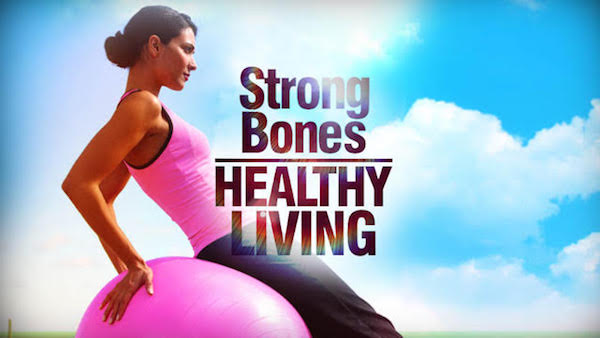 DD HEALTH WATCH: As we age, bones tend to lose density, and conditions like osteoporosis, as well as osteoarthritis (causing stiff and painful joints), become more common.
DD HEALTH WATCH: As we age, bones tend to lose density, and conditions like osteoporosis, as well as osteoarthritis (causing stiff and painful joints), become more common.
While it isn’t always possible to prevent these things entirely, there is a lot we can do to help our skeletons and supporting soft tissues stay in good shape.
One in five men and one in two women aged over fifty in Ireland will break bones due to osteoporosis.
What is osteoporosis?
Bones are living tissue. Bone is scaffolding which supports the body against the force of gravity. Bones resist the pull of our muscles to allow movement.
As bone is a living tissue, it reacts to appropriate weight-bearing exercise by growing stronger.
Bones and joints play a huge role in our health and general wellbeing; they’re key to keeping active and mobile, and yet can be highly susceptible to injury and pain, so keeping them healthy is vital.
Low bone density doesn’t cause pain or have any symptoms, although constant upper back ache may be a sign of broken vertebrae.
Diagnosis of osteoporosis
The only definitive way to check your bone density is through an X-ray: a DEXA scan. This is painless, takes five minutes and is carried out when you can be almost fully clothed. If you break a bone when you’re under 50, have a genetic risk, or an early menopause, your GP should arrange this X-ray for you.
– Only 30% of Irish people aged 60+ who fracture a hip regain their independence.
– 90% of hip fractures are due to osteoporosis but only approximately 15% of people with osteoporosis are diagnosed.
– One hip fracture costs €31,000, a DEXA scan for osteoporosis costs approximately €100
Risk factors:
Genetic – a family history of osteoporosis
Early Menopause– before the age of 45 – 47
Smoking
Low body weight under BMI 19
History of eating disorders
Excess alcohol consumption – over 14 units per week
Some drugs used long term, such as steroids
Post-menopausal
If your final period occurs before the age of 45 -47 – you have an increased risk. This is because oestrogen is vital for bone health. If your cycles have been irregular all your life then you may also be at risk.
Immediately after the menopause, bone density can decrease by 20% in five years.
This is a significant amount of bone loss and although the loss slows down, it does continue to decrease for the rest of our lives unless we take preventive measures.
Treatment of osteoporosis
It’s well known that diet is important: calcium and vitamin D, for example, are essential for building strong bones, while omega-3-rich foods, like oily fish, are believed to help protect joints.
Prevention is better than treatment so maintaining your bone density through lifestyle measures and diet is very important.
Here are some simple ways to keep those bones and joints healthy. Remember that Osteoporosis affects people of all ages.
An exercise programme for a 20, 45 and 70 year old will all differ.
1. KEEP MUSCLES STRONG
Exercise is vital for strong bones. The more impact on your bones and the more your muscles work on them, the stronger they will be. Exercises that work include: dancing, walking, jogging, tennis, some yoga, and aerobics. Swimming is an excellent exercise which works all major muscle groups without putting pressure on joints. Cycling is another good choice.
2. DO SOME WEIGHT-BEARING EXERCISE
As excellent as swimming is, in an ideal world, it’s wise to combine it with some weight-bearing exercise too, such as walking, dancing, or even doing steps up and down the bottom stair at home.
Weight-bearing movement actively helps to build up bone strength. Build up slowly and speak to your physiotherapist or doctor for advice if you already have problems.
Examples of weight bearing activities include tennis, hockey, football, basketball, running, jogging, team sports and dancing. Walking is a weight-bearing exercise, however it is important to change your pace intermittently.
3. STRETCH IT OUT
If stiff and painful bones and joints are an issue, often the last thing you feel like doing is attempting to stretch. However, there is evidence that keeping supple, and practising yoga and Pilates-based exercises, can help reduce pain and improve joint health.
Always check with a healthcare professional before starting any new exercise regimes if you have a history of health problems, and go gently and listen to your body.
4. MAINTAIN A HEALTHY WEIGHT
Being underweight is sometimes linked to a higher risk of fractures and osteoporosis, while being overweight or obese can put extra pressure on joints, contributing to pain and stiffness.
5. STOP SMOKING
Numerous studies have also linked cigarettes with higher rates of osteoporosis and bone fractures.
6. KEEP ALCOHOL INTAKE MODERATE
Be sensible. Long-term heavy drinking has also been associated with poor bone health in later life.
7. BE MINDFUL OF MENOPAUSE
Hormonal changes during and after menopause can affect women’s health in a number of ways, including bone health. In fact, bone density can reduce by up to 20% in the five to seven years after menopause.The important thing is to remember that menopause isn’t something that should be ignored or that women should just ‘put up’ with.
8.DIET
A healthy diet is essential. Dairy foods do contain calcium, but if you can’t tolerate dairy or don’t want to eat three portions a day, think about other sources. There are many non-dairy foods that are rich in calcium, including kale, broccoli, oranges, sardines, salmon and beans.
Supplements
It’s fine to take supplements but you need calcium and magnesium together to help the calcium absorption.
Consuming a high amount of calcium alone is no guarantee you will not develop low bone density.
People with digestive problems like Crohns disease are more at risk as their absorption rates of all minerals and vitamins is lower. Vitamin D is necessary for bones. The best source is sunshine during the summer.
You can obtain it in certain foods like oily fish and eggs, but you can also supplement your diet.
STOP your exercise programme if you experience pain and have the area of pain reassessed. If pain persists, it could be a sign of an over-use injury, which means you should stop exercising until the injury heals. If you are feeling unwell, exercise is not recommended.
If you experience stiffness after exercising, this is your body saying that you have done too much, too soon. A slow walk could help to loosen up your muscles.
Exercise must be taken regularly to have any benefit. Little and often is the best strategy. Regular exercise must be a permanent lifestyle decision because if you stop, it’s beneficial effects gradually wear off.
Muscles adapt to extra use within weeks but bones take several months.
For more information on exercise and Osteoporosis, the Irish Osteoporosis Society has a book available entitled ‘Exercise for Strong Bones, your easy-to-follow guide to reducing your risk of Osteoporosis’. It costs €10 and can be purchased by calling Lo-call 1890 252 751or online in the IOS shop.

Tags:







